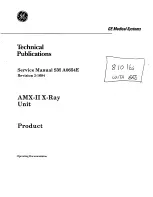
CONTROLLED COPY
Centre for Biological Engineering
Standard Operating Procedure
SOP025
Title: USE AND MAINTENANCE OF THE SYSTEC VX 95 AUTOCLAVES
Location:
Autoclave Room, H31, CBE
Version 004
Effective Date: 28
th
June 2020
Review 28
th
June 2022
Written by: A. Chandra
Reviewed by: P.Hourd
Approved by: R.I.Temple
Page 23 of 26
5.13. Spill Response
(i)
Spills may occur from a boil over or breakage of containers. All spills MUST be cleaned
up immediately.
(ii)
Wait until the autoclave and materials have cooled to room temperature. Contain the
spilled material using absorbent paper towels. Refer to SOP038 to determine the necessary
protective equipment, spill cleanup, and disposal protocols.
(iii)
Clean the equipment and work area in order to collect and remove all spilled materials.
Dispose of the waste following the protocol appropriate for the material. If materials have been
intermingled, follow the cleanup and disposal protocol for the most hazardous component of the
mixture.
(iv)
If required, carry out the cleaning cycle (Cycle 12) for cleaning the autoclave. To do this,
the autoclave heats up to a temperature of 134 °C and sterilizes the interior for one minute.
Record the cycle run in the autoclave log.
(v)
Unc
ontaminated cracked glassware must be disposed of properly in the “Broken Glass”
disposal bucket.
(vi)
Record the spill and cleanup procedure in the Spill Record Log (Refer to SOP038).
5.14. Equipment Malfunction
(i)
If the autoclave fails, malfunctions or does not operate as expected,
DO NOT
attempt to
fix the problem. The user should contact the Laboratory Manager. With permission of the
Laboratory Manager the user should consult the Operator Instruction Manuals to access fault
finding, error displays and troubleshooting procedures. However, Autoclave repair MUST be
performed by qualified persons only. A notice must be placed on the autoclave indicating that it
is not to be used until the problem is diagnosed and corrected.
(ii)
Record the problem and corrective actions in the Equipment Maintenance record .
(iii)
If the equipment fails to work or malfunctions and cannot be rectified according to
troubleshooting procedures detailed in the Operator and Users Manuals the Laboratory
Manager must be informed and a “Do Not Use” notice should be posted on the equipment.
Contact the manufacturer for advice and coordinate with the Lab Manager for external
maintenance and servicing.




































